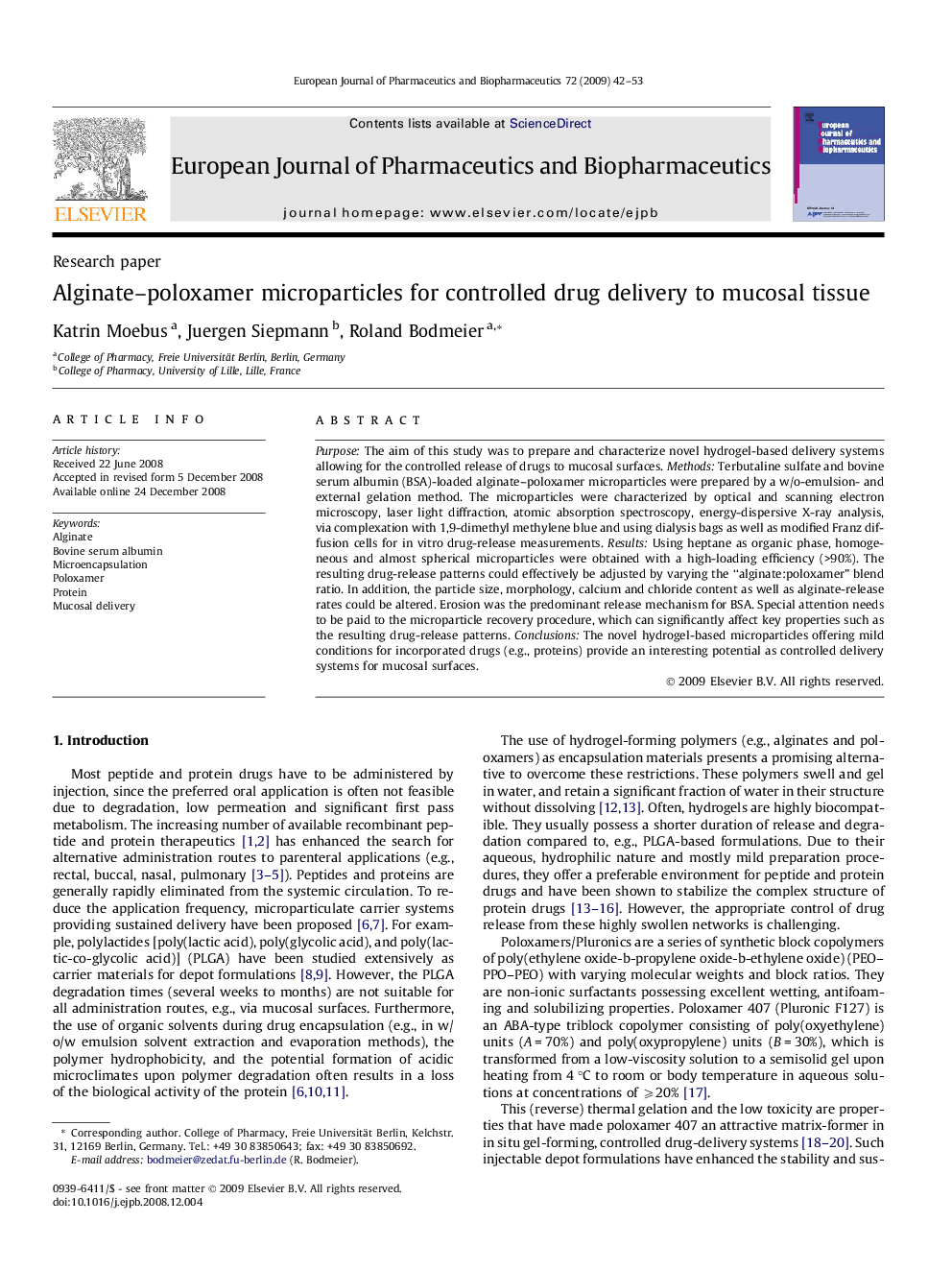| Article ID | Journal | Published Year | Pages | File Type |
|---|---|---|---|---|
| 2084341 | European Journal of Pharmaceutics and Biopharmaceutics | 2009 | 12 Pages |
Purpose: The aim of this study was to prepare and characterize novel hydrogel-based delivery systems allowing for the controlled release of drugs to mucosal surfaces. Methods: Terbutaline sulfate and bovine serum albumin (BSA)-loaded alginate–poloxamer microparticles were prepared by a w/o-emulsion- and external gelation method. The microparticles were characterized by optical and scanning electron microscopy, laser light diffraction, atomic absorption spectroscopy, energy-dispersive X-ray analysis, via complexation with 1,9-dimethyl methylene blue and using dialysis bags as well as modified Franz diffusion cells for in vitro drug-release measurements. Results: Using heptane as organic phase, homogeneous and almost spherical microparticles were obtained with a high-loading efficiency (>90%). The resulting drug-release patterns could effectively be adjusted by varying the “alginate:poloxamer” blend ratio. In addition, the particle size, morphology, calcium and chloride content as well as alginate-release rates could be altered. Erosion was the predominant release mechanism for BSA. Special attention needs to be paid to the microparticle recovery procedure, which can significantly affect key properties such as the resulting drug-release patterns. Conclusions: The novel hydrogel-based microparticles offering mild conditions for incorporated drugs (e.g., proteins) provide an interesting potential as controlled delivery systems for mucosal surfaces.
